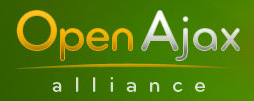Translations: Italiano, français
The release of jQuery 1.1.2 is upon us! This is a another bug fix release. We’ve fixed a number of outstanding issues. The fixes have been tested well, so there shouldn’t be any regressions (knock on wood). The most noticeable issue that was resolved was related to animation flickers when doing a slideDown.
It is highly recommended that you upgrade.
As always, if you have any questions or concerns with new release, please feel free to discuss it on the jQuery Mailing List. If you think you’ve spotted a bug, please add it to the bug tracker.
Download
- Compressed JavaScript (Recommended Download!)
- Uncompressed JavaScript
- Full Release (jQuery, Test Suite, Documentation)
- Build Files (Compile your own version of jQuery 1.1.2)
Bug Fixes
The most important bug fixes, relevant to this release, are as follows:
- Change: Event handlers (like
element.onclick) are now removed when no more functions are bound to the event. - Fixed: DOM Manipulations for form elements.
- Fixed:
jQuery.isFunctionto return false on nodes. - Fixed:
jQuery.className.has, escaping regex characters inclassName(for metadata) - Fixed: an issue in IE where an event on a cloned element is fired during a
.clone()inside of an event handler. - Fixed: IE ID selectors selecting by the name attribute.
- Changed: Events are now internally stored in
elem.$eventsrather thanelem.events(due to a nasty bug relating to DOM 0 expandos). - Changed:
.attr('href')is now consistent in all browsers. - Changed:
@hrefis now consistent in all browsers. - Fixed: the
slideDownflickering bug. - Fixed: Having a
\rendline in$("...")caused a never-ending loop. - Fixed: IE6 AJAX memory leak
- Fixed: bug in pushStack, reporting an element at
[0]in a jQuery object with length 0
Documentation
Additionally, the documentation has been back-ported out of the wiki and into the API docs. All of the documentation resources have been updated in respect to the 1.1.2 release.
- Official Documentation:
http://docs.jquery.com/ - API Browsers:
http://jquery.bassistance.de/api-browser/
http://jquery.com/api/
Leading up to jQuery 1.1.3…
This may seem like a fairly light bug fix release, but we’re gearing up to the release of jQuery 1.1.3. A number of outstanding bugs (about 5-10) require significant changes to how jQuery works, internally (specifically, in relation to events and animations). We want to make 100% certain that there are no regressions made to these important pieces of code.
We have patches nearly ready (animation is ready, events is in the works) – and when that’s the case, we’re going to release a preview of the 1.1.3 code so that everyone can test against it.
Update: This has also been announced on Learning jQuery: jQuery 1.1.2 Released
Update: A nasty glitch in Safari was found and fixed. We just re-tagged jQuery (it’s now SVN rev 1465 instead of 1460 – this includes a fix for the bug, and it temporarily disables the test suite in Safari) and all the jQuery 1.1.2 downloads should be updated, as well.






